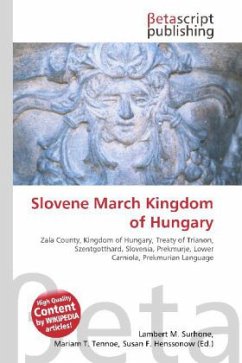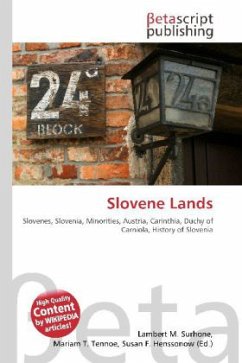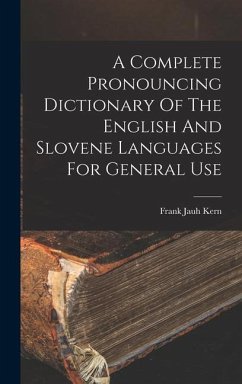
Slovene March Kingdom of Hungary
Versandkostenfrei!
Versandfertig in 6-10 Tagen
26,99 €
inkl. MwSt.

PAYBACK Punkte
13 °P sammeln!
Please note that the content of this book primarily consists of articles available from Wikipedia or other free sources online. Since the 10th century, the Slovene-inhabited area between the Mura and Rába rivers was part of the Kingdom of Hungary. Most of this area was included in the Vas County, while a smaller portion to the south-east belonged to the Zala County. In the 12th century, the bishop of Gy r founded a Slovene deanery district in his bishopric, under the name Tótság. The name came from the Hungarian term ''Tót'' which meant Slav. In the local Slovene dialect, the ecclesiastica...
Please note that the content of this book primarily consists of articles available from Wikipedia or other free sources online. Since the 10th century, the Slovene-inhabited area between the Mura and Rába rivers was part of the Kingdom of Hungary. Most of this area was included in the Vas County, while a smaller portion to the south-east belonged to the Zala County. In the 12th century, the bishop of Gy r founded a Slovene deanery district in his bishopric, under the name Tótság. The name came from the Hungarian term ''Tót'' which meant Slav. In the local Slovene dialect, the ecclesiastical administrative unit became known as Szlovenszka okroglina or ''Slovene Circumscription''. In 1778, this area was transferred to the newly-created Bishopric of Szombathely, and the first bishop János Szily created a district called Vendvidék or Wendic March, from the Hungarian term Vend for the local Prekmurian Slovenes. Roman Catholic priests of the region called it Slovenska krajina, from thename of the local Slavic people which in their local dialect an regular, as in all Slovene dialects, is Slovenci or Slovénge.












